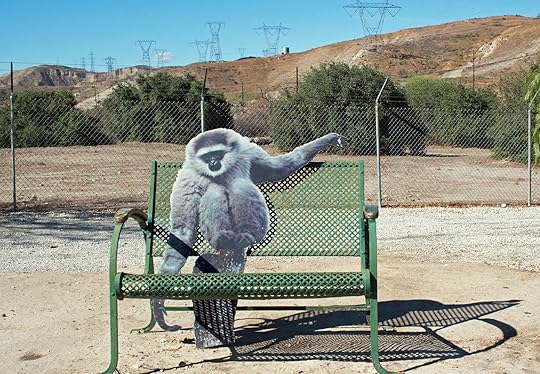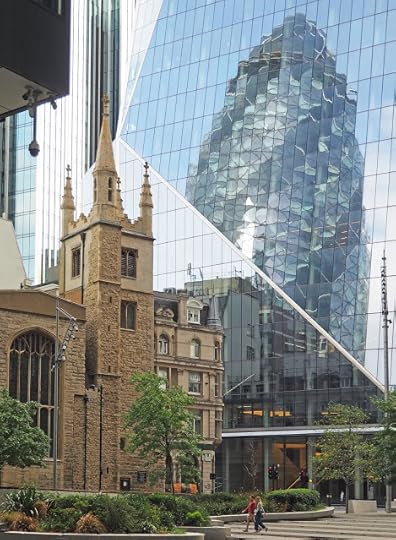Geoff Nicholson's Blog, page 7
October 16, 2023
PRO BONO PUBLICO
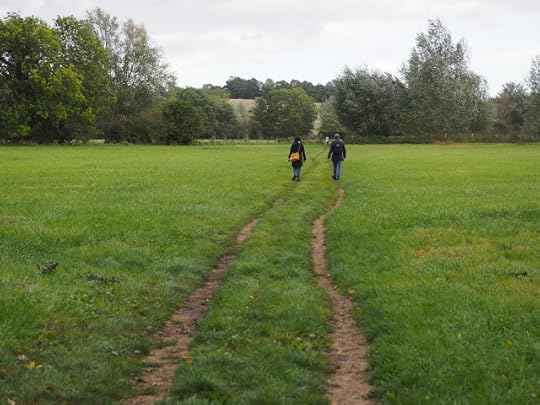
I’ve been talking to Stefan van Norden about being on his podcast titled ‘Nature Revisited.’ Stefan is also a gardener and a filmmaker, perhaps best known for the documentary Negotiating with Nature about the natural world, gardening, connection and disconnection. Walking inevitably comes into it. This is the man himself:

He wants to do a podcast to be called something like ‘Walking In The UK.’ He’s based in the States in New Hampshire, and his line is that British walking culture is very different from any other in the world. I’ve been pondering whether and how this is true, and naturally I dug out a few volumes from the Nicholson Pedestrian Library to see what others had had to say on the subject. The one that seemed most on the money was The Magic of Walking by Aaron Sussman and Ruth Goode, in which there’s a section titled ‘Walking, British Style.’
Part of it runs, ‘Wherever we may set foot (in Britain), some eighteenth-century essayist or nineteenth-century poet walked there before us. When Thomas Gray whose ‘Elegy written in a country churchyard’ we all read in school, walked the Lake District in 1769, after a long day’s walking he found the inn’s best bedroom dark and damp, and went sturdily on for another 14 miles to Kendal and another inn that pleased him more, before he stopped for the night.’
I’m not sure that this is especially British, and it does seem a bit like showing off.
Stefan is particularly fascinated by our system of Public Footpaths. He’s thrilled by the idea that you see a sign that says Public Footpath and you know you can walk freely there, across or through other people’s land, and who knows where you’ll end up. That part I absolutely agree with. I have quite a collection of photographs I’ve taken of Public Footpath signs; this kind of thing:
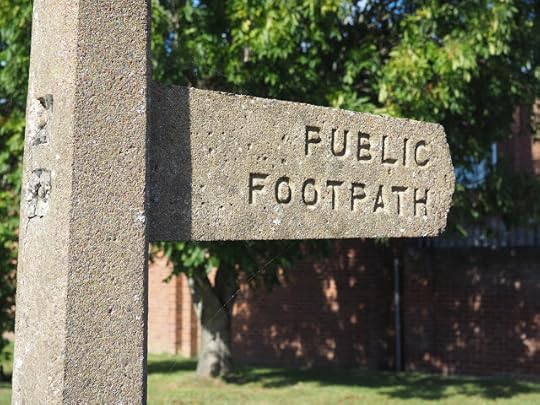

And when I see one pointing to a footpath like this, I often feel compelled to go down it.
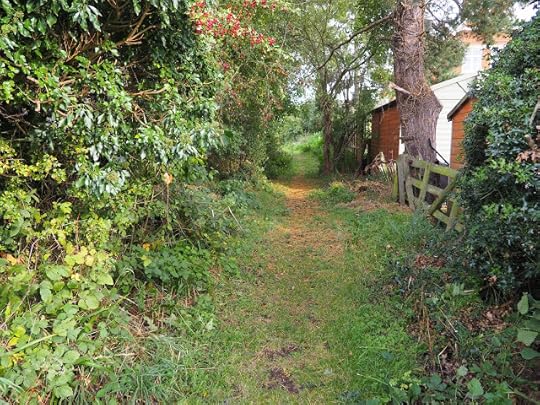
I was able, to a limited extent, to explore this further last week when a mixed group of fellow trudgers came to Manningtree; 3 from London, one from lower Essex, one from Brazil, to do the somewhat familiar walk to Dedham, in Constable Country. Here we are looking like a little-known but still surviving prog-rock band.
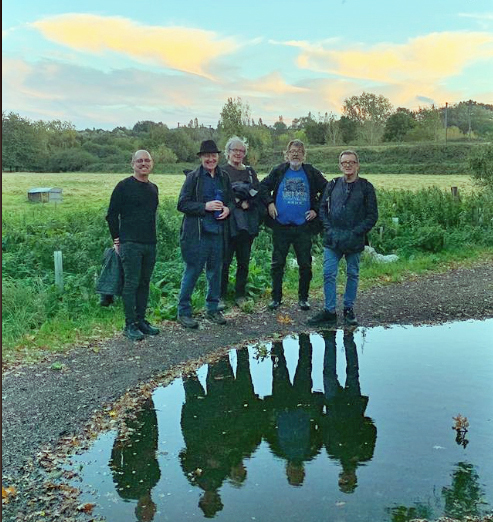
There was one woman in the group, who took the above picture. She looked like this, while admiring a mound of sheep’s wool.
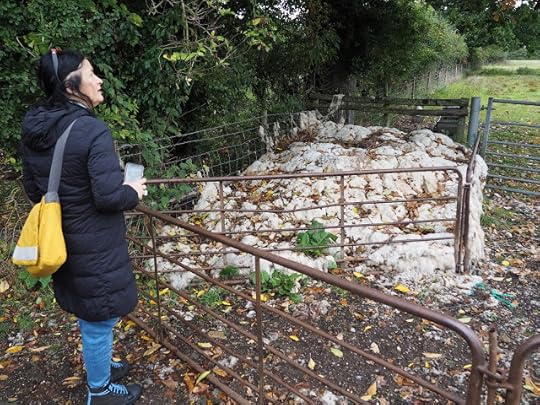
We didn’t have any great sense of urgency or purpose in our walk, and even with detours and meanders we probably only covered about 7 miles: Thomas Gray would have laughed at us, but we passed a considerable number of Public Footpath signs in their various forms:
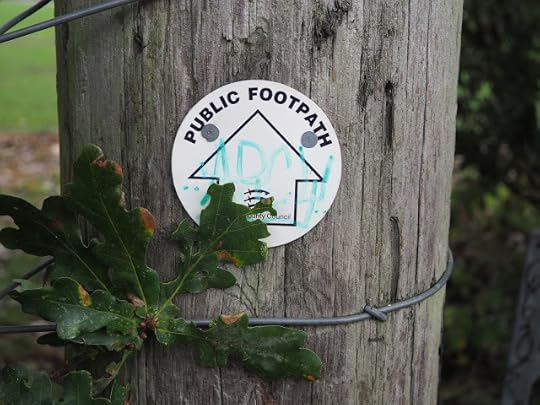
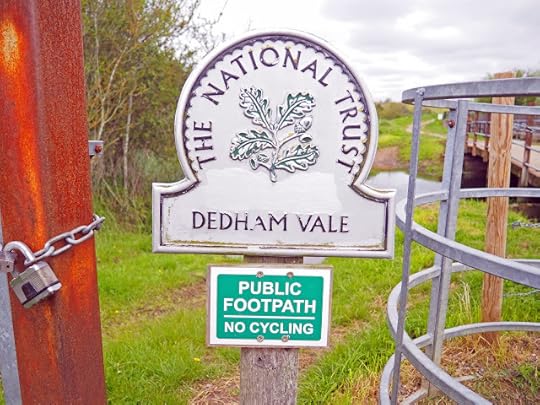

And at my instigation we did discuss British notions of walking versus hiking versus trekking, and how these might be different elsewhere in the world. We found the ‘rambling’ especially interesting. The British Ramblers Association has been around since been around since 1935. Looks like it was a great way to meet babes.

And we certainly discussed how different English rambling is from American rambling. I’m still singing the Allman Brothers’ ‘Ramblin’ Man,’ not least because of its lines
My father was a gambler down in Georgia
And he wound up on the wrong end of a gun.
As Stefan and I had discussed, if you stray from a footpath in Britain you might possibly get yelled at by an angry farmer, but in general you’re unlikely to get shot. In America it can be a little different.
I suspect the Allman Brothers weren't great walkers.

October 9, 2023
OF WALKING AND SITTING
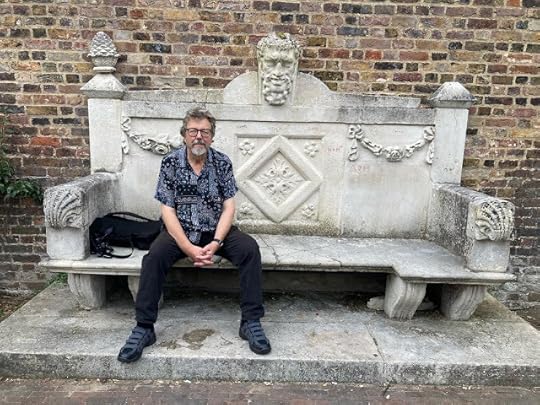
Look, you know me; I like walking. But however much you like walking, however intrepid you are, however much stamina you’ve got, a moment always comes when you need to sit down. Of course if you’re truly intrepid you’ll happily sit on a rock or an ants’ nest but some of us are glad to find a bench on our travels.
All benches are good and some are downright exotic but the memorial bench is a particular favourite of mine.
As far as I’m aware, nobody I’ve known personally, has ever been memorialized on a bench but I think it’s a great way of remembering someone. And so I walk through the world sometimes sitting on benches, sometimes just looking at them and particularly noting the plaques and inscriptions.
However, in most cases, these memorialize people I never knew and have never even heard of. I got rather enthused by his one, in the Painswick Rococo Garden in Gloucestershire which memorializes John Berryman, but it’s not John Berryman the poet, it’s some quite other John Berryman.


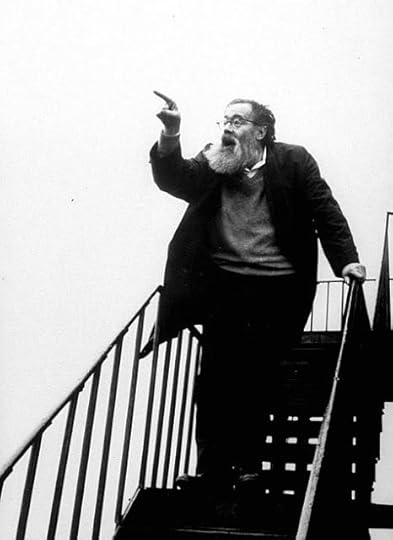
This next one in Holland Park commemorates Arnold Toynbee who I’d sort of heard of, and Daisaku Ikeda – who I absolutely hadn’t, but he sounds like a good guy – look him up.

This is the two of them having a dialogue:
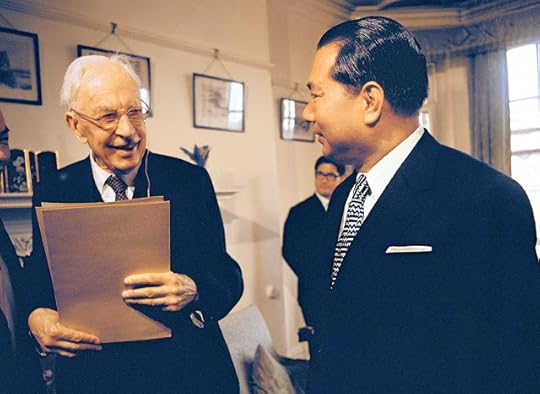
But fame isn’t necessary. Below is a wonderful bench in a churchyard in Chelsea which I like a lot. Aren’t all spouses debating partners in the end? Until they stop talking. Though of course you want to know the back story.
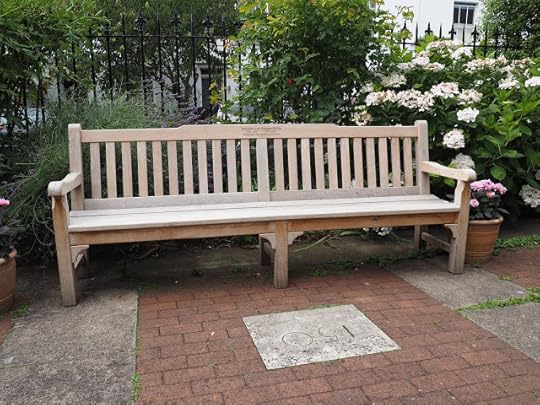
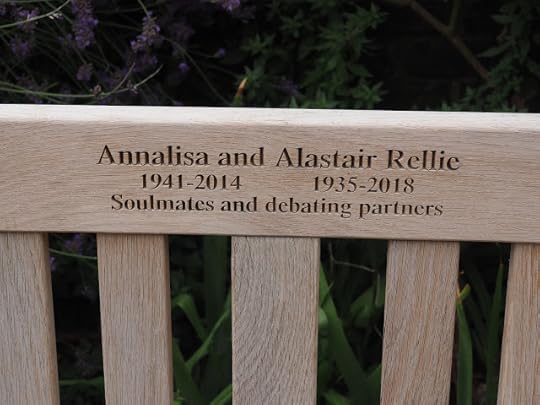
Similarly with this one. What exactly do you have to do to become known as The Duck Lady. Is it just a matter of feeding them or is it more that that?
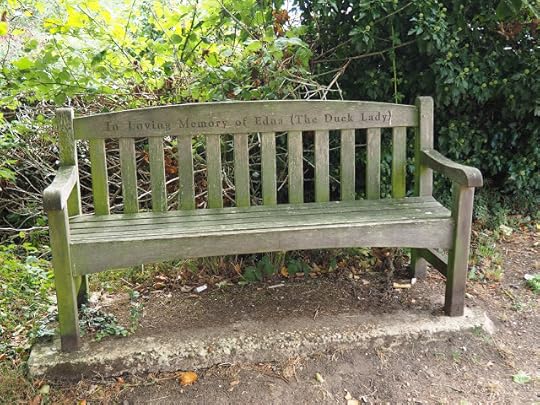
Sometimes the back story seems a more complicated and inscrutable and possibly tragic one, as with this one in Wivenhoe (I think). 'Lost in India' raises a lot of questions.
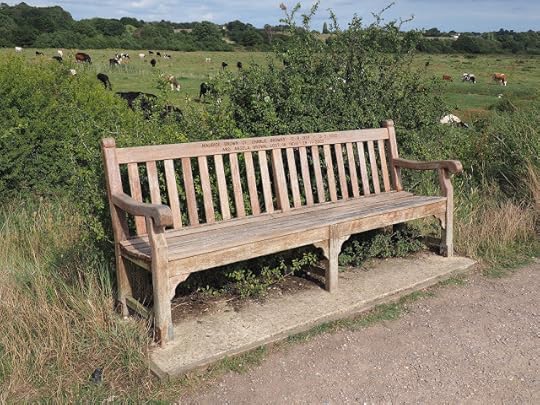
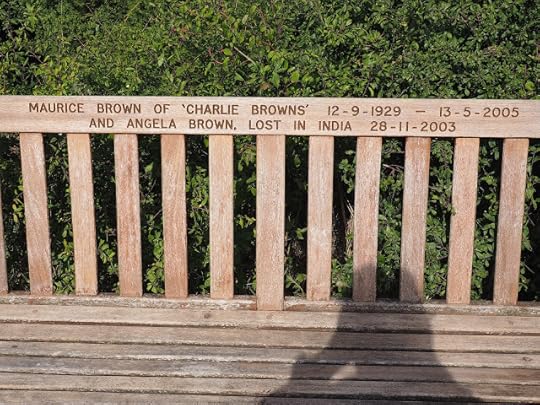
And I'm intrigued by this one in Richmond. And no, I haven’t been able to find out who John 'Jack’ July is. He could have been a dancer, but perhaps the dancing was only figurative. And was he really still dancing in his 90s?
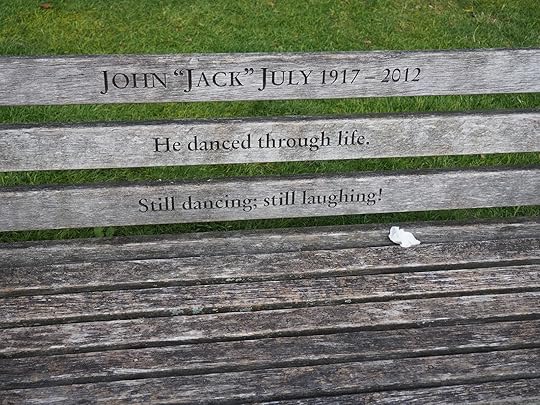
Of course picking the right spot for your bench is all-important: you can’t put it just anywhere. They say that if everybody who wanted to put a bench on Hampstead Heath was allowed to, the place would look like a giant arena.
Which brings me to Nicky Hopkins’ memorial bench in the wide open spaces of Perivale.
Hopkins played keyboards with huge numbers of bands and artists, including the Stones, Quicksilver Messenger Service, Joe Walsh and L. Ron Hubbard (yes really). He died aged 50 in Nashville Tennessee. I wonder if there’s a memorial bench for him there.

October 2, 2023
A WALK IN THE WALKING CITY
It’s that point in the year when a lad and lass think it’s time to walk around the City of London, a place that in general have no reason to go, in order to see Sculpture in the City, a now annual project that puts sculptural artworks in among the zesty new buildings (and some old ones) of the City’s insurance district.
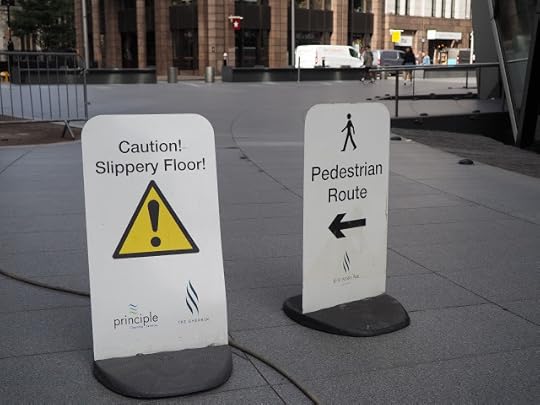
In fact it lasts much of the year and as they say in their publicity ‘it’s completely free and is accessible 24 hours a day, 7 days week,’ but we always seem to end up going there on an autumnal Saturday morning when lots of other people walk also around the City, staring at the buildings, peering at maps, looking vaguely lost. Some of them are no doubt there for the sculpture though many seem to find them a big surprise when they come across them, as with these folks discovering ‘Earthing’ by Jocelyn McGregor.
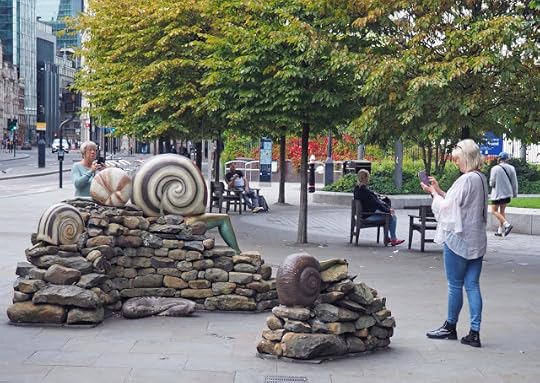
It has snail shells and human parts!
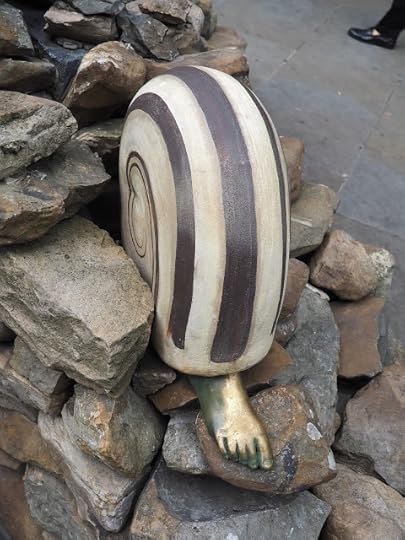
Inevitably some of the works of art strike you more forcibly than other. I was particularly taken by Jesse Pollock’s ‘The Granary,’
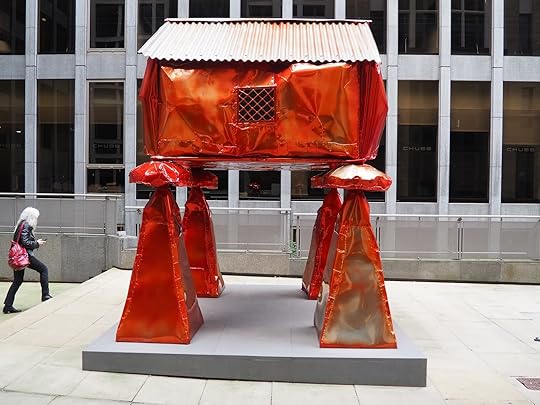
And below is ‘Miss’ by Emma Louise Moore which is carved from Carrara marble, and apparently becomes translucent when the sun hits it, although on a slightly grey morning in late September you had to take their word for that.

But I was there, at least partly, to see some work by Isamu Noguchi, who’s become a recent interest of mine, though not yet an obsession. In fact there were three sculptures of his, all grouped together in St Helen’s Churchyard: Mountain, Duo and Neo-Lithic all made from galvanized-steel and which according to the literature ‘express his (Naguchi’s) lifelong engagement with sculpture, the landscape and the bodily sensorium.’ I don’t believe I’ve ever previously typed the word sensorium. They looked like this:
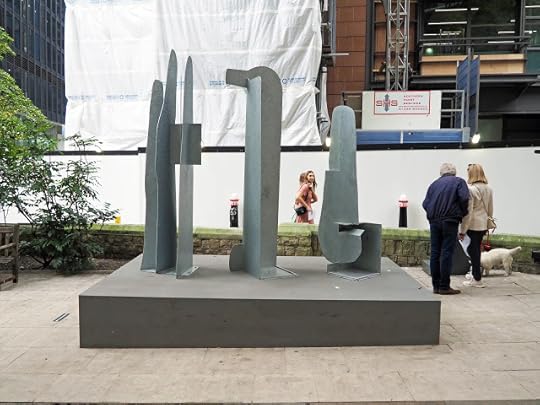
To be honest Noguchi’s work looked rather low key compared with the bells of whistles of many of the other sculptures, but the quietness was part of its appeal.
There obviously is some connection between walking and sculpture. Sculpture is one of the few art forms you can actually walk around, and certainly when the sculpture gets to any size the sculptor has to walk around while making it.
Noguchi made works such as ‘Walking Void,’ ‘In Silence Walking,’ ‘Large Walking Box,’ ‘Little Walking Box,’ 'Man Walking.
This is ‘Man Walking’

This is 'Walking Void#2.’

Noguchi did once say 'I want sculpture equal to myself walking.’ I’m having fun trying to work out what he meant by that. Here’s a picture of him walking.
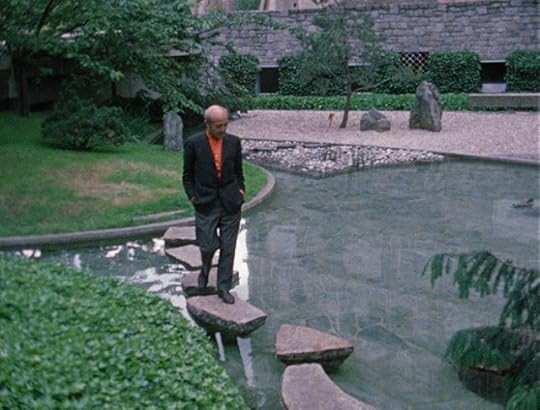
September 25, 2023
HIGHWAY WRONGS
I was walking into the grounds of Colchester General Hospital the other day and I came across a sign at the entrance from the main road that read, ‘No highway rights exist or shall accrue beyond this point.’ (I take a great interest in signs that forbid or limit pedestrianism.)
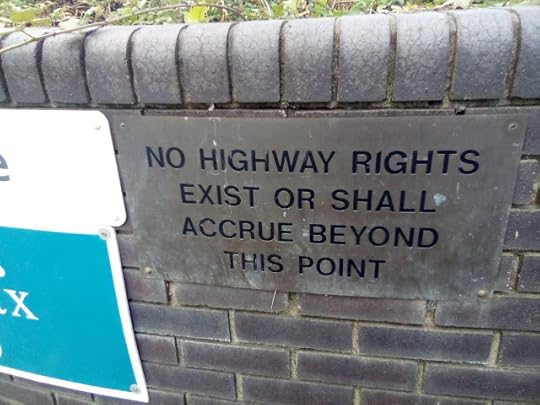
Being in a Philistine frame of mind I started thinking about Deep Purple’s ‘Highway Star,’ AC/DC’s ‘Highway to Hell’ and a great many other songs that tend to refer to the highway as a place for truckers and demon drivers as opposed to pedestrians, which left me wondering what ‘highway rights’ are.
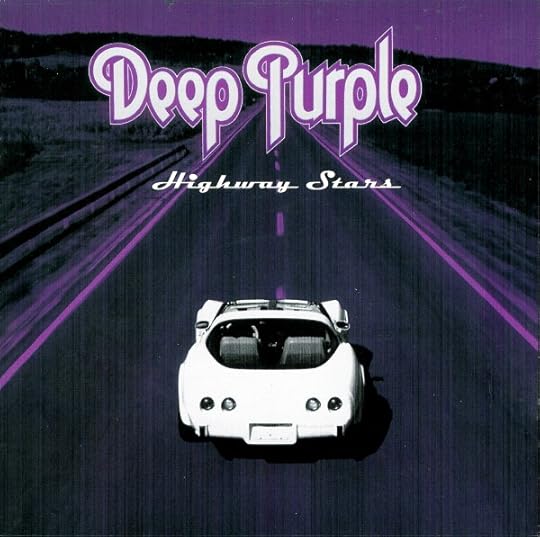
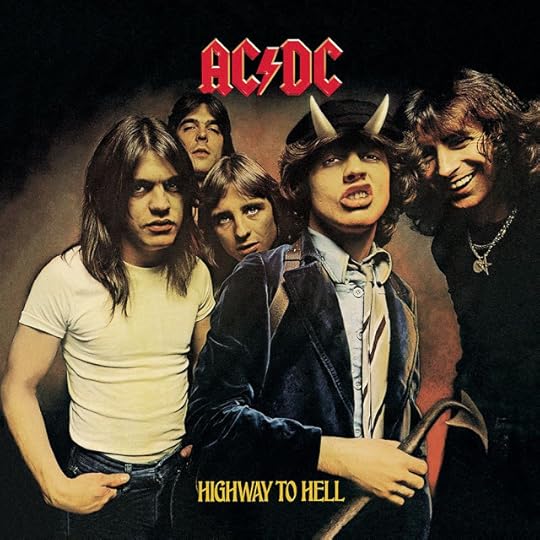
A little research on various plausible-seeming websites tells me that, ‘Highway rights mean that the public has a right to “pass and repass” over the land.’ Got that? Not just pass but pass and REPASS. What then is a highway? ‘A Highway is an area of land which the public at large have the absolute right to use to “Pass and Repass” without let or hindrance.’ OK then, but it’s worth noting, ‘Though the term highway is popularly used to refer to roads, its legal definition covers any public road, track or path. Historically, a highway, which was also referred to as ‘the King’s highway’, was defined as a public passage for the use of the sovereign and all his or her subjects. The Highway Act 1835 defines highways as ‘all Roads, Bridges (not being County Bridges), Carriageways, Cartways, Horseways, Bridleways, Footways, Causeways, Churchways and Pavements’.
The ancient King's Highway was a trade route from Egypt to Mesopotamia, from Heliopolis (where the obelisks abound) across the Sinai peninsula and by a circuitous route to Resafa, now in Syria. It’s a long walk in anybody’s book, and not one our present monarch is likely to be undertaking.

In England, of course, we have ‘The Highway Code,’ a handy little book that you acquire and read when you’re learning drive then never think about again once you’ve passed your driving test.

We tend to think of it as a guide for drivers but in fact rules 1 to 36 apply specifically to pedestrians. Most are straightforward and common sense but one or two are slightly baroque.
Rule 15: Reversing vehicles. Never cross behind a vehicle which is reversing, showing white reversing lights or sounding a warning.
Rule 16: Moving vehicles. You MUST NOT get onto or hold onto a moving vehicle.
Good advice there.
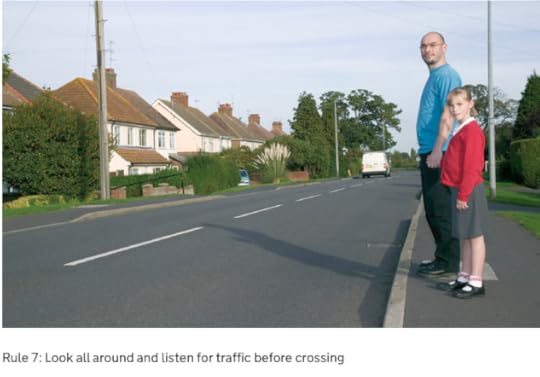
Above is an illustration from the Highway Code website. You and I might think that walking across that road wouldn’t be too much of a challenge, but if Death Race 2000 has taught us anything it’s that you can never be sure what’s coming round the bend. Bonus points for killing pedestrians.

September 19, 2023
GEORGE AND SAM - FEEL THE POWER
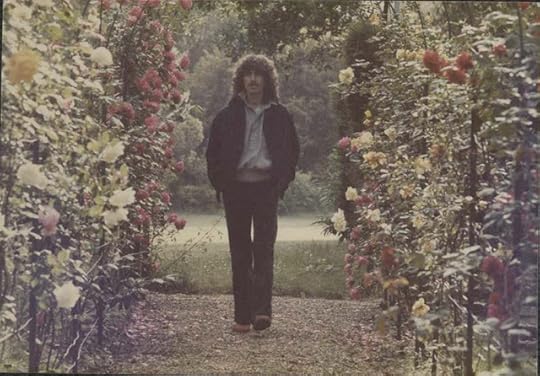
I assume your Facebook feed is much like mine, dredging up all kinds of nonsense about psych rock, tree surgeons, orthopedic shoes, organic food hampers, and so on, but just once in a while it brings something vaguely interesting such as this from ‘Remembering George 1943-2001,’ as in George Harrison.

It’s an aerial photograph of what was his country house, Friar Park in Henley on Thames, and it comeswith a caption/quotation from George, ‘My Garden you can stroll around it in ten minutes if you’re power walking. Which is what I do these days. If you saunter it could take half an hour. If you swagger maybe 45 minutes.’
I’m not sure that a swagger is slower than a saunter but here’s an image byPaul Sandby titled A Man Swaggering, one of twelve London Cries drawn from life and published in 1760. It certainly looks like it might take him a while to get anywhere, even around a garden.
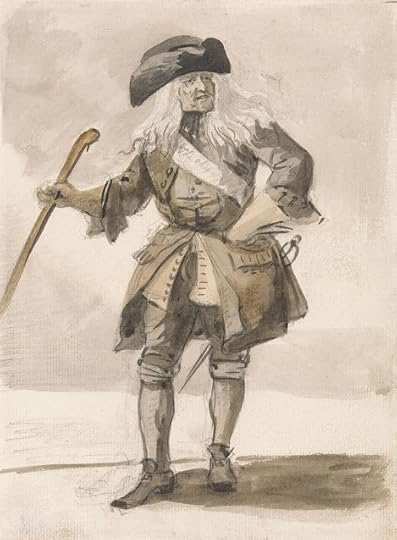
This is Friar Park as seen on Google maps.
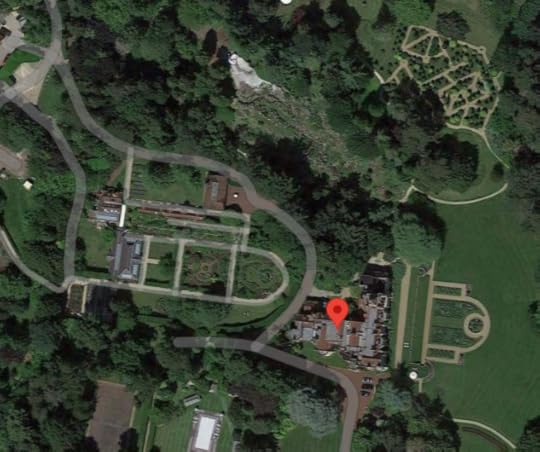
As far as I know there are 36 acres of garden at the house, and I’m not sure where those 36 acres begin and end, but it looks like a lot of ground to walk around, even power walk around in ten minutes, though a lot may depend on what you mean by ‘around.’
I was reminded of a Samuel Pepys diary entry, Saturday 18 May 1667 ‘Up, and all the morning at the office, and then to dinner, and after dinner to the office to dictate some letters, and then with my wife to Sir W. Turners's to visit The., (Theophila Turner) but she being abroad we back again home, and then I to the office, finished my letters, and then to walk an hour in the garden talking with my wife, whose growth in musique do begin to please me mightily, and by and by home.’
That sounds like a full day with a lot of back and forth, but fortunately the Pepyses lived in a house in the Navy Office buildings on Seething Lane, so they lived above (or even in) the shop. Below is the best historic image I’ve found of the Navy Office. It looks as though you’d have to do quite a lot of back and forth to occupy a whole hour.
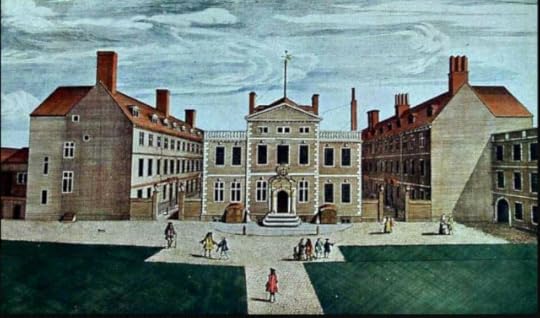
Today there is the Seething Lane Garden, commemorating Pepys, which you can walk around in about five minutes.
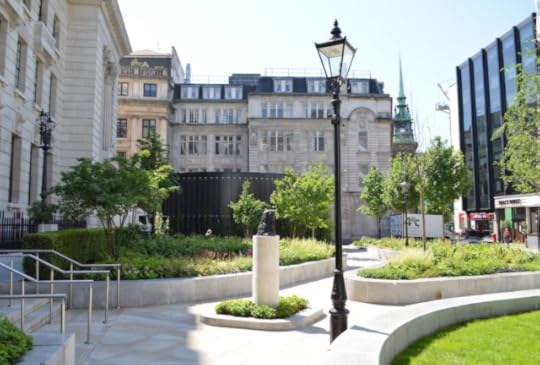
This is George Harrison in his garden, not swaggering nor power walking, but on his feet, having his picture taken and not looking especially comfortable about it.

September 16, 2023
WALKING WITHOUT MOSQUITOS
Possibly you’ve been hearing about Colin Bell, the 102-year-old former World War Two fighter pilot (he flew Mosquitos) who abseiled 280 feet down the Royal London Hospital last week. He did it for charity of course, raising money for the Royal College of Nursing, the RAF Benevolent Fund and the London Air Ambulance. Here he is walking on the roof prior to descent.
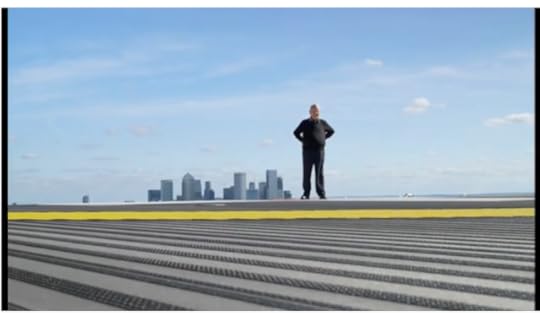
Here he is descending, in tandem.
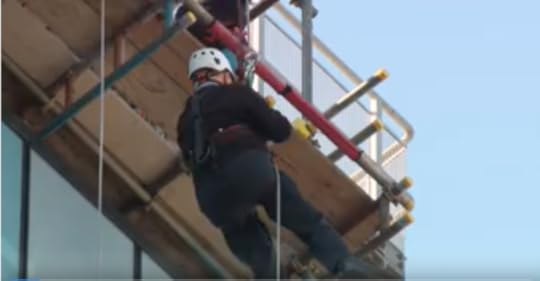

Colin Bell is also a walker (again for charity), and in a BBC radio interview he talked, slightly vaguely, about a walk he did from Churchill College in Cambridge to the American Cemetery in Madingley Road (2.2 miles), and Downham Market where he was stationed during the war, to Bexwell Church (2 miles). I’m not sure that he walked from the American Cemetery to Downham Market, since that would be about 35 miles, and in any case, according to the Guardian ‘Precise distances were not recorded,’ and one of Colin’s helpers was reported as saying ‘when you’re 102, two miles can feel like 22.’ I don’t expect to live long enough to check the accuracy of that statement, but it sounds reasonable.
 If only more walkers would wear ties.
If only more walkers would wear ties.
In that radio interview Colin Bell didn’t specifically mention walking as the secret of his longevity he put it down to good genes and ‘A combination of alcohol, exercise, and the love of good women, with the odd bad one thrown in.’ I suppose the ‘exercise’ may have been walking, but given the good and bad women, other forms of exercise may have been involved.
September 10, 2023
CELEBRITY WALKING
Celebrities aren’t like you and me, they do things differently, even walking. And no celebrity is quite like the sainted Davina McCall.

There she was in the Times magazine recently, in an article with the shout line ‘I didn’t need drugs. But I had a hole in my heart that and they filled that,’ which I translate as ‘I didn’t need drugs I just liked them.’
Is she a walker? Hell yes. She ‘ran into’ Matthew Robertson, then presenter of Pet Rescue while out walking her dog. Reader, she married him in 2000, and separated in 2017 – that’s many, many decades in celebrity marriage years. And she kept on walking.
A little research reveals that in 2021 she did something nasty to her foot after tripping on a tree root while out walking her dog. This, of course, she shared on Instagram – and issued a ‘trigger warning’ for the image. I think we’ve all seen worse.

But about a week later she shared another picture and the foot was looking much better. Whew! Drama! Relief! Bathos!

Here’s another picture of Davina walking: not a tree root in sight.

September 7, 2023
A POOR MAN IN RICHMOND
Last weekend I played the part of a walking author, leading a guided walk around Richmond for Books on the Rise bookshop.
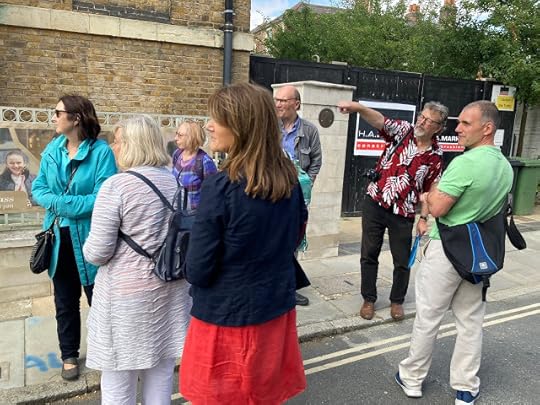 Photo: Caroline Gannon
Photo: Caroline GannonI was a little worried about this since I know next to nothing about Richmond and despite a couple of reccies (one of them op cit) I hadn’t come up with a grand idea, but then, as inspiration often comes out of desperation, I suddenly thought and announced to the ten or so people who’d turned up for the walk, that since I was so ignorant of local conditions, they should guide me. They seemed to fall for it, at least nobody demanded their money back (not that I was getting any of their money).
I wasn’t entirely inert. This was going to be my walk rather than theirs, and one of the things I do as a walker, is look at a map and if I find a street with an unusual or engaging name, I go there. And so my/our walk started in a street called The Vineyard, which led eventually to a street named Mount Ararat Road.
Off we went. There was no actual vineyard visible in the Vineyard, though there was The Vineyard Community Centre, and there were vines growing up several of the houses, and there was no sign of the flood in Mount Ararat Road, though there was a dentist’s surgery called the Ark,

and in the front gardens there were a surprising number of olive trees.

We wandered for 90 minutes or so, not quite aimlessly, and eventually we ended up in Paradise Road at the house where Virginia and Leonard Woolf set up the Hogarth Press, with a blue plaque framed by a lot of wisteria. There was wisteria everywhere in Richmond.
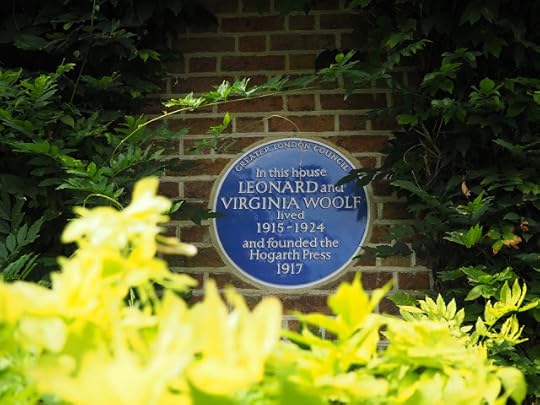
Of course we saw things we hadn’t expected to see; a phone box that had a dial tone and so may even have been functional,
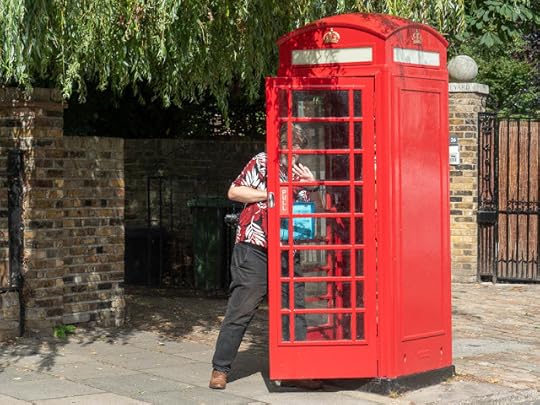 Photo: Jen Pedler
Photo: Jen Pedler
an almost armillary sphere,
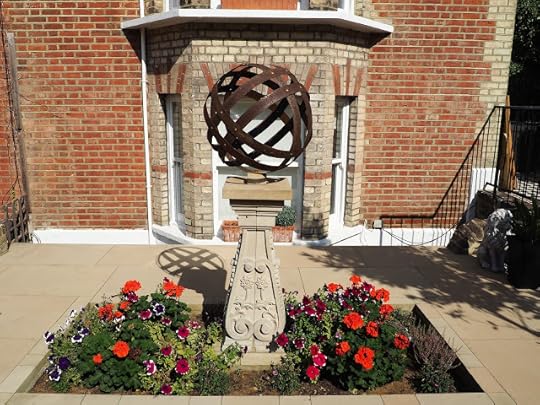
the occasional liminal space,
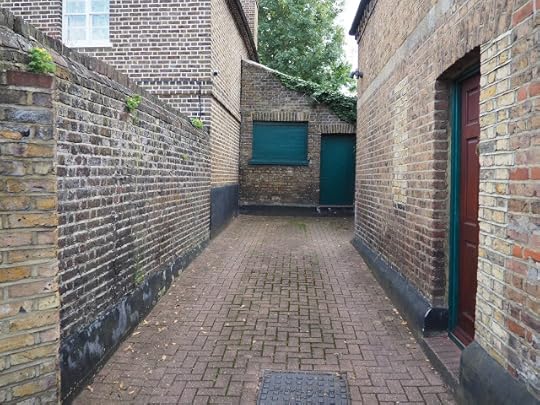
and the biggest rosemary hedge I think I’ve ever seen.
I think the walk worked, to the extent that a couple of the walkers did say to me, ‘Oh, I walk around here all the time but you’ve made me see things I’ve never seen before.’ That, obviously pleased me, though in my modesty I’d say I hadn’t made anybody do anything, but I’d created the conditions that allowed people see for themselves. Hey, it’s what I do.
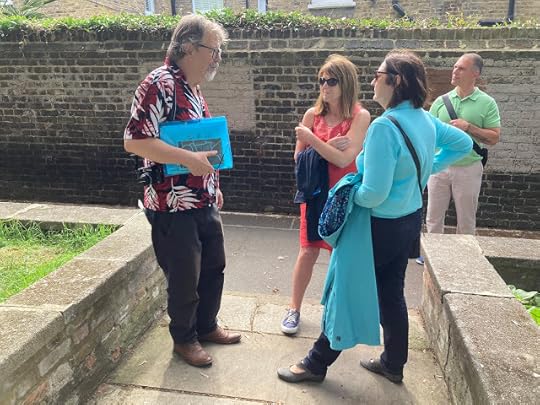 Photo: Caroline Gannon
Photo: Caroline Gannon
August 24, 2023
WALKING IDLY
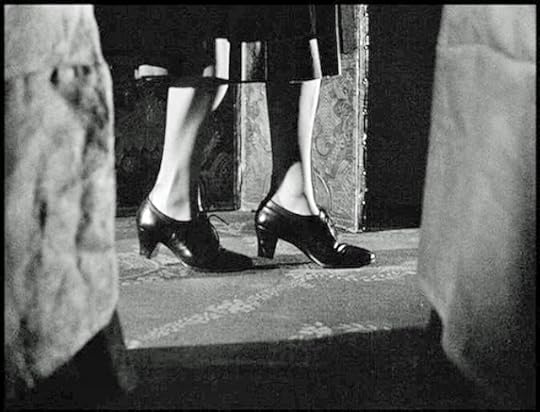
It’s a good long time since I last watched The Fallen Idol, the 1948 film directed by Carol Read, based on the short story ‘The Basement Room’ by Graham Greene, who was also one of the writers of the screenplay.

My memories of course are patchy but I do recall the staircase. Note to self: no good ever comes from living in a house that has a staircase like this.
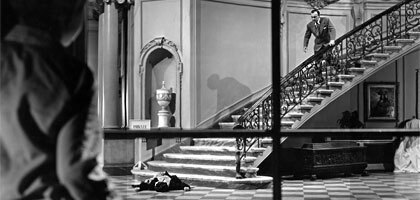
And I do recall the young lad who’s at the centre of the film wandering around London at night in his pyjamas.
I thought it was pretty good film, but only now however many years after seeing the it, I got around to I reading the Graham Greene short story on which it’s very, very loosely based.
The first thing to note is that everything in the film is much posher than in the book. The house has become an embassy, Baines the butler who’s a bit of a rough diamond in the book has become Ralph Richardson, the little boy Philip has become Philippe and developed a French accent, but the stuff about walking is oddly consistent between book and film.
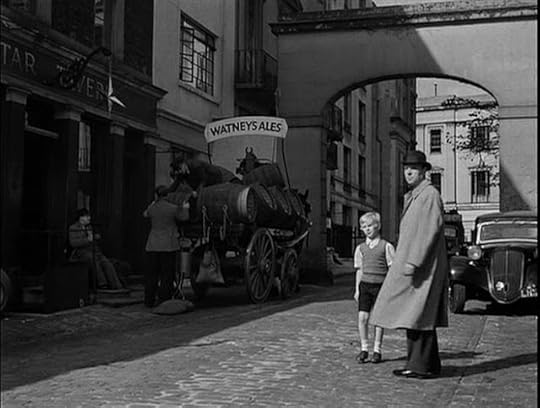
In the story, Philip ‘wouldn’t go upstairs to get his cap but walked straight out across the shining hall into the street, and again as he looked this way and that, it was life he was in the middle of.’
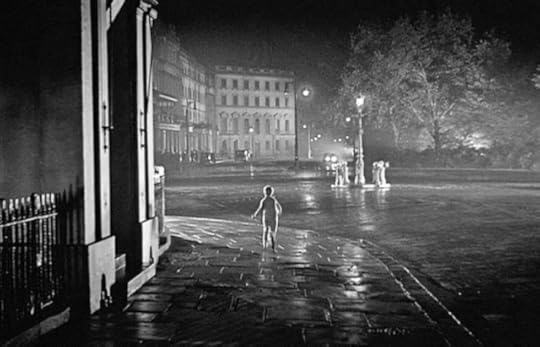
Then, ‘He was wearing pyjamas and bedroom slippers when he came up into the square but there was no one to see him. He explored the garden: it didn’t take long, a twenty yard square of bushes and plane tress, two iron seats, and a gravel path and a padlocked gate … But he couldn’t stay …’
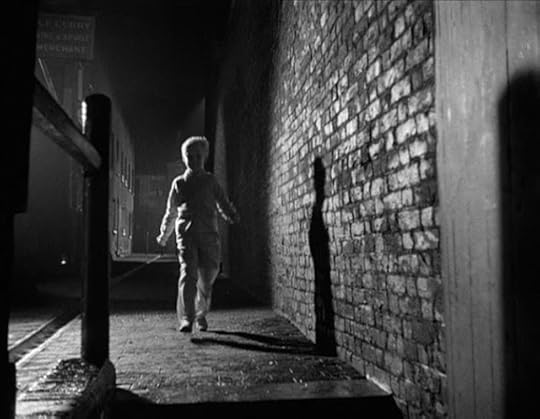
Then gradually he loses his nerve and becomes frightened. ‘At first he feared that someone would stop him. After an hour he hoped that someone would.’
Finally he sits on a step and cries, and a policeman sees him, takes pity on him and takes him to the police station, though that doesn’t make matters any better at all.
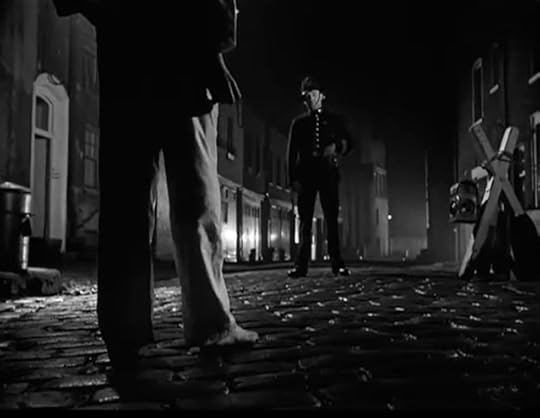
Once when I was a kid, probably about the same age as Philip/Philippe, I got separated from our family group on our day at the seaside, I think it was probably Bridlington. It wasn’t night and I wasn’t in pyjamas, but I’ve never felt so lost and hopeless, and I did start crying, but nobody, least of all a policeman, took pity on me. I simply wandered around hopelessly and eventually spotted a member of the family, my cousin Margaret. Of course she hadn’t even noticed that I’d gone missing.
August 15, 2023
THE PERFUMED SUBURB
For my sins, which I would say are not especially heinous, and to plug my new book, which is hardly a sin at all in a writer, I’ve agreed to conduct a literary walking tour in Richmond, for Books on The Rise bookshop, though not for a week or three.
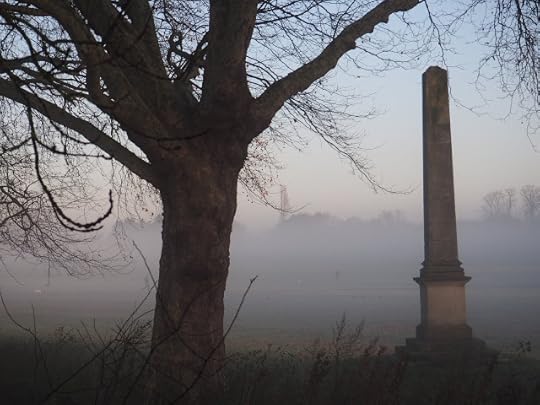
Knowing next to nothing about Richmond, I went down there at the weekend, with my trusty amanuensis, to do a reccie and hope for inspiration. I knew there were some literary connections with Virginia Woolf, George Eliot, Dickens and Pope, but that all seems a bit done. And I had been there once and seen the obelisk in the deer park, but I accept that not everyone shares my intense love of obelisks.

And then something clicked. I happen to remember that Sir Richard Francis Burton had gone to school in Richmond, and more than that, his archive was housed in the Orleans House Gallery, though I’d only ever seen it online.
And prize of the collection were two plaster casts, one of a Burton hand, one of a Burton foot. I believe they were made by Albert Letchford in 1890, the year of Burton’s death. Since Letchford painted Burton on his deathbed, I imagine he did the casts at the same time.
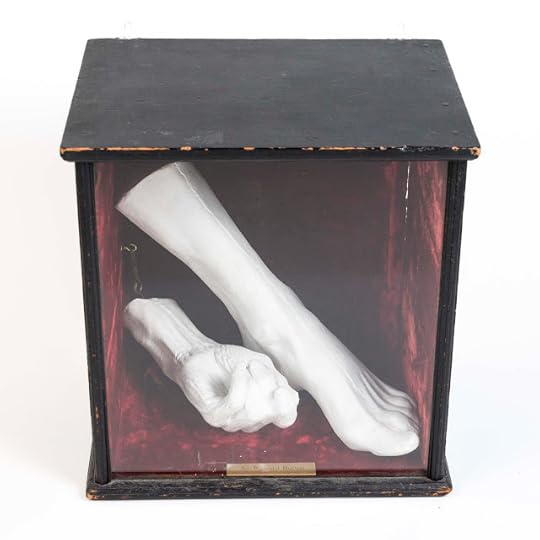
Wouldn’t it be a fabulous climax to my walking tour, I thought, to any walking tour, to end up staring at a plaster cast of Sir Richard Francis Burton’s foot?
So we set off from Richmond station, down the main street, heading for Orleans House, over the river, through Marble Hill Park.
Of course I hoped to spot some curiosities along the way, and obviously I think walking is all about finding curiosities: as with all these things, the journey is in part the destination. The question is whether those things that I find curious and fascinating are the same as the things that would fascinate a group on a literary walk.
I mean, I was encouraged at the very start by a sign for a Nicholson’s pub, but I can see that not everybody would be.

There were a couple of gennels and I do love a good gennel, but I accept that not everybody does.
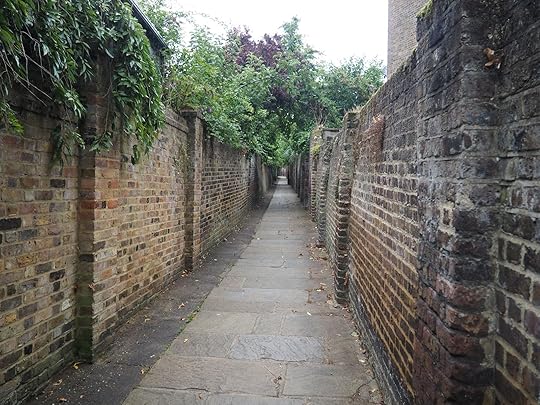
And I spotted another obelisk, this one on the bridge, with a stern warning:
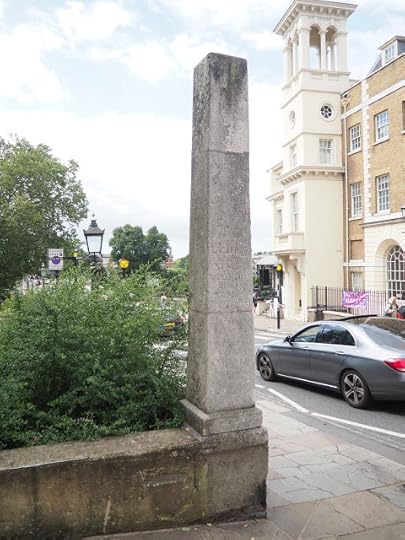

A circuitous route also took us down Orleans Road, past some some fine, patinated garages

and there was a bit of post-modernity in a house designed by Evans and Shalev who also designed the Tate, St Ives.

Walking through the garden of Orleans House there were the sounds of an installation by Phoebe Boswell titled A Tree Says (In these Boughs The World Rustles) which was fine though obviously it didn’t please everybody.

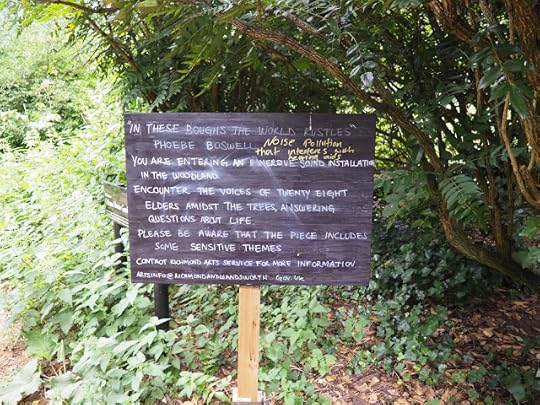
As we entered the Orleans House Gallery there was no sign of Mr. Burton and his archive. An enquiry to the woman at the front desk confirmed that the collection was there but not on display, and although it could be seen on request, the gallery was in the process of changing curators so things were a bit chaotic and there’d be no chance of seeing it until the autumn.
We wandered around the gallery which was fine and we did meet a guide in one of the rooms who said there’d once been a big portrait of Burton right there but the curator had taken it down. I supposed this was the old, and soon to be departed, curator, but who knows what the new one will make of it? I don’t have enough information to say that Burton has been ‘cancelled’ but it certainly looked like he’d been sidelined.
In any case my plan to conclude my literary walk with a sighting of Burton’s plaster foot was obviously not going to come off. I need a Plan B. I’m working on it.
Geoff Nicholson's Blog
- Geoff Nicholson's profile
- 55 followers


